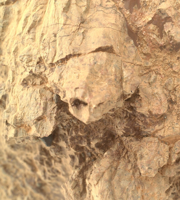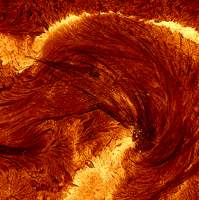The study found that near-surface winds can reach up to 160 kilometers per hour.
The satellite spectacle was captured from the International Space Station.
Both caves found connect to underground cave networks that which could provide natural shelter.
"Rogue planets" don't orbit stars, free-floating on their own instead.
The massive protoplanet is around 5 million years old and about 437 light-years from Earth.
The interior of the mysterious far side of the satellite could be chillier than the side constantly facing Earth, according to an analysis.
NASA's Perseverance robot spotted the intriguing rock on Aug. 31 and stopped to snap a photograph.
The giant hole was spotted facing Earth, likely firing solar winds at our planet that could lead to spectacular auroras.
The James Webb Space Telescope shows a jaw-dropping view of a planet-forming disc, nicknamed the "Butterfly Star," appearing to have wings.
The observations could reshape how we understand the Sun’s magnetic architecture and improve space weather forecasting.










